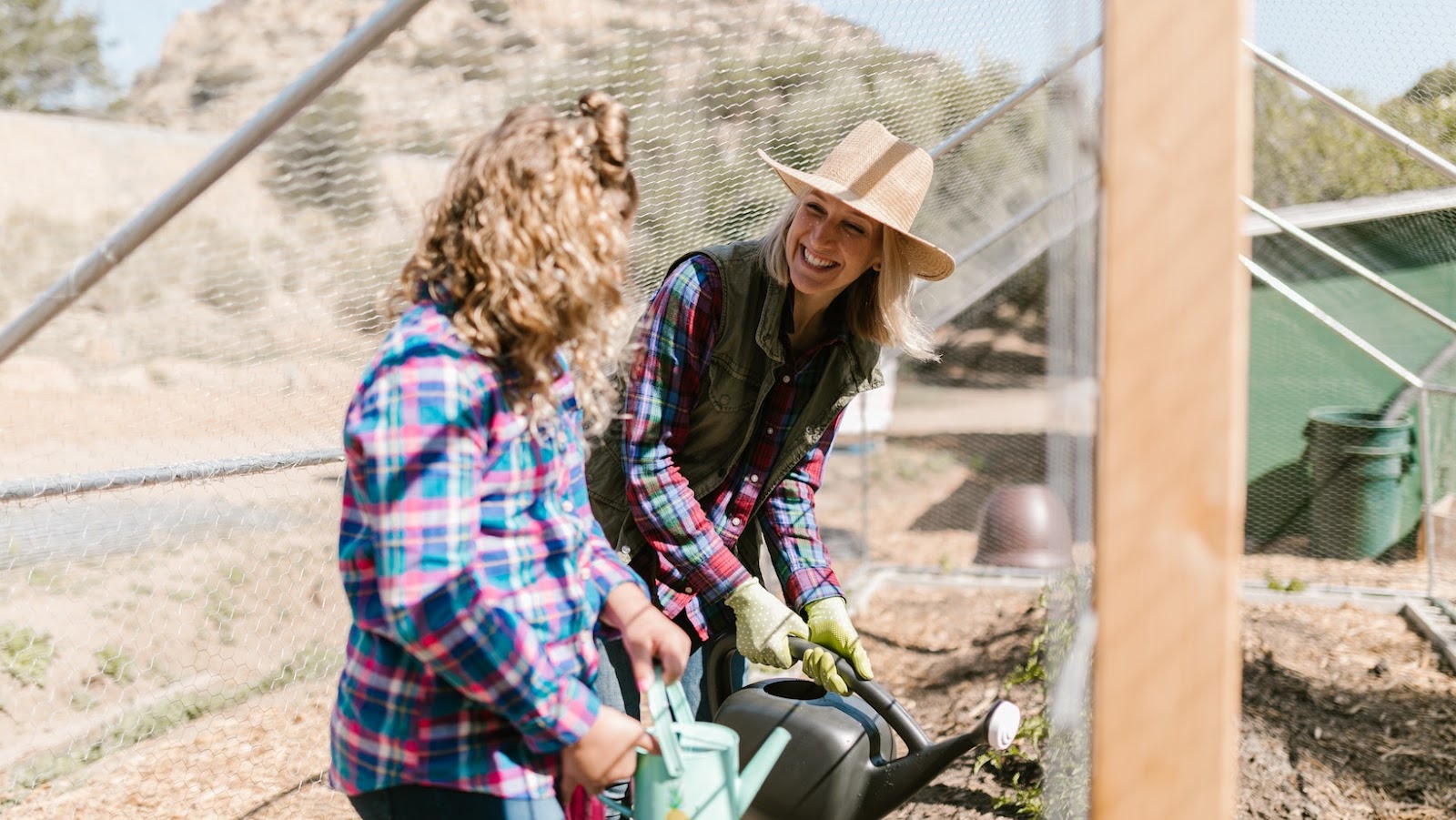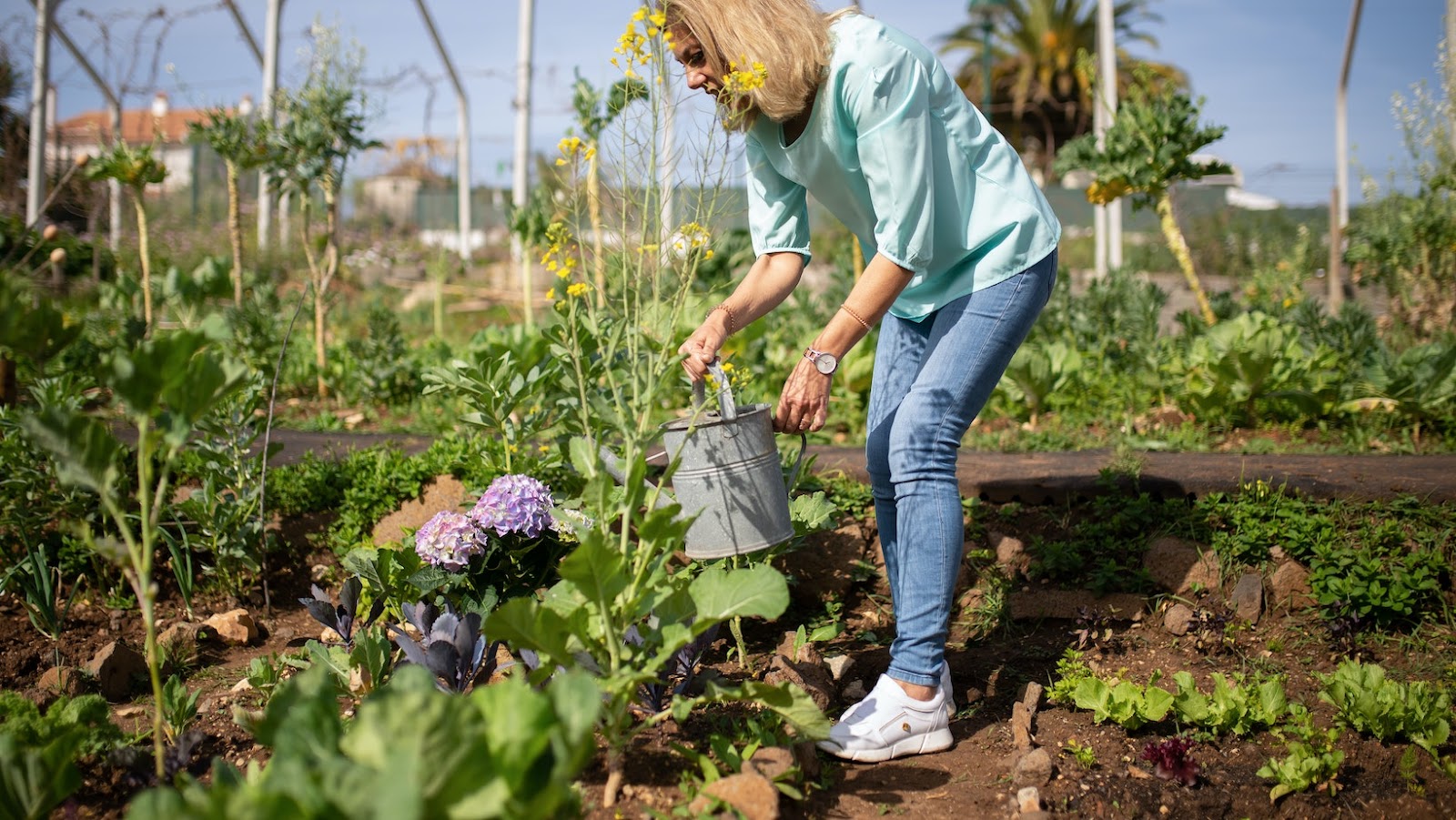To determine which fertilizer is best for your tomato plants, consider the specific needs of your garden. This section will explore the types of fertilizers available and how they can benefit your tomato plants. Discover the advantages of organic and inorganic fertilizers in promoting the growth and health of your tomato plants.
Organic Fertilizer
Organic fertilizer is plant food made from living or dead organic material. It gives soil health, and grows delicious tomatoes without chemicals or synthetic additives. It comes in many forms such as compost, manure, bone meal, fish emulsion, and seaweed extract. It gives essential macronutrients and micronutrients to the soil and the tomato plants. Plus, it starts microbial activity in the soil, helping the plant grow. Its slow-release formula prevents over-fertilizing and runoff. It also keeps soil fertile long-term, improving its structure and water-holding capacity. It’s a sustainable and eco-friendly option that reduces environmental pollution caused by synthetic fertilizers.
Organic fertilizer makes the soil absorbent to water, reducing the need for frequent watering. It also conserves soil biodiversity due to its natural composition. To use organic fertilizer, mix it into the planting hole before adding the tomato seedling. Top-dress with more fertilizer every 4-6 weeks throughout the growing season. And don’t forget to water thoroughly after application.
Try adding nutrient-rich options like bone meal or kelp meal to give your tomato plant even better health and productivity. These give calcium, strengthening tomatoes’ cell walls and increasing their disease resistance. They also add essential trace minerals needed for plant photosynthesis. Unfortunately, composting is where garbage turns into garden gold, and worms become the unsung heroes of the tomato patch.
Organic components are key for fertilizing tomato plants. A Biological Soil Amendment, like compost, is a great option. Compost is a soil conditioner that provides micronutrients and macronutrients.
Compost has many benefits.
Compost contains life-sustaining ingredients like carbon & nitrogen. It works with soil organisms to create an actively healthy environment for plants.
Roger Smith has been gardening for decades. After incorporating compost, he experienced a whole new level of tomatoes. Compost gives tomatoes the best life!
Manure is a great fertilizer for tomato plants. It provides balanced macronutrients for growth and fruiting. Here’s a table of different types of manure and their nitrogen, phosphorus and potassium content:
Cow 0.6% 0.2% 0.5%
Chicken 1.8% 1.5% 0.9%
Horse 1.4% 0.7% 1.9%
Sheep 1.4% 0.7% 1%
Mixing or alternating types of manure each season can add diversity to soil. Manure has been used for centuries to increase soil fertility, improve soil structure and help crops like tomatoes grow.
Fish emulsion is a great organic and sustainable way to ensure optimal growth and fruitful tomato yields.
Fish Emulsion: an organic fertilizer made from processed fish scraps. It contains nitrogen, phosphorus and potassium, making it ideal for tomatoes. See the nutrient makeup below:
Nitrogen 5%
Phosphorus 1%
Potassium 1%
Plus tons of trace elements, like iron, calcium and magnesium. Safe for food crops, no harm to beneficial insects. This type of fertilizer goes way back… Egyptians and Romans used it to nourish their crops. Still popular today, it’s an affordable and eco-friendly option for home gardeners. So get your tomatoes ready for a bountiful harvest!

Inorganic Fertilizer
Inorganic Fertilizer is the most popular agricultural product among farmers and gardeners. It’s made of minerals from non-living sources, like rocks and limestone. This fertilizer contains primary nutrients: Nitrogen (N), Phosphorus (P) and Potassium (K). Plus, secondary macronutrients like Calcium (Ca), Magnesium (Mg) and Sulfur (S).
Using Inorganic Fertilizer right can dramatically increase crop yields. For example, a farmer called John learned how to do it from a friend. He followed the advice and experienced a huge improvement in his tomato yield.
Give your tomato plants the NPK they need! Nobody wants a hangry tomato!
Nitrogen-Phosphorus-Potassium (NPK) fertilizer
NPK Blend Fertilizer is a popular choice for tomatoes, containing nitrogen, phosphorus, and potassium. It provides essential nutrients to promote growth and fruit production.
Nitrogen helps foliage, phosphorus aids roots, and potassium boosts overall health and disease-resistance. The ratio of NPK in the fertilizer varies depending on the soil and tomato plant. Over-applying NPK can lead to too much leafy growth and not enough fruit.
Plus, some fertilizers have extra micronutrients like magnesium, sulfur, and calcium, which are all great for healthy tomatoes. NPK has been used in agriculture since the early 1900s, and now different organic and synthetic options are available. So, don’t forget to give your tomatoes an extra boost with Calcium Nitrate!
Maximizing tomato growth and yield requires fertilizer. ‘.2 Calcium Nitrate’ is a recommended nutrient solution. It contains 15.5% nitrogen and 19% calcium.
To understand this formula better, create a table with three columns:
Nitrogen 15.5% Improved plant cell wall strength.
Calcium 19% Disease resistance and fruit shelf life.
This last special benefit reduces food waste in households and commercial areas. It also strengthens plant cells, increasing absorption capabilities, and fruit production.
But be careful with ‘.2 Calcium Nitrate’ – too much can cause excessive foliage growth with little or no fruits. Tomatoes need precise nutrients – they’re like the divas of the vegetable world.
Understanding Nutrient Requirements of Tomatoes
You need to understand their nutrient requirements to ensure that your tomato plants are healthy and productive. To meet these requirements, you may need to use specific fertilizers. In this section, we will help you understand the nutrient requirements of tomatoes. We will cover the Importance of Nitrogen, Phosphorus, and Potassium and the Micronutrients Required by Tomatoes.
What Is the Best Fertilizer For Tomatoes
It’s key to understand the nutrients tomatoes need for healthy growth and abundant fruit. The essential nutrients are nitrogen, phosphorus, and potassium. First, let’s look at the table:
Nutrient Functions Symptoms of Deficiency:
Nitrogen Stimulates leaf growth and chlorophyll formation. Enhances fruit development. Stunted growth, yellow leaves.
Phosphorus Aids in root development, flower formation. Improves fruit quality. Purplish tint on leaves and stems. Reduced yields.
Potassium Resistance to drought and disease. Increases yields and stress tolerance. Weaker stems. Yellowing leaf margins.
It’s important to have a balanced amount of these nutrients for the best tomato growth. Plus, tomatoes also need calcium and magnesium. Be careful not to overdo nitrogen-based fertilizers, which can lead to weak stems and diseased plants! Tomatoes show us that sometimes, it’s the small stuff (like micro-nutrients) that make a big difference.
Dosage Guidelines for Inorganic Fertilizers
Too much fertilizer can have adverse effects like burnt leaves or stunted growth. Also, not enough fertilizer can decrease the yield. It’s important to follow the guidelines for the particular fertilizer used.
For better absorption, water plants deeply before adding any fertilizer. Additionally, organic fertilizers should be used alternatively with inorganic ones every three weeks – they provide long term benefits and don’t have a negative impact on the environment.

Importance of Proper Dosage
Correct fertilizer dosage is essential to growing tomatoes and getting a good yield. Too little fertilizer can cause stunted growth, even death of plants. Too much can also cause damage. Using the right amount of fertilizer is necessary for healthy plant development, root establishment, and fruit formation for optimal harvest.
Understand soil nutrient composition, tomato variety, and growth stage. For instance, young tomato plants need nitrogen-rich fertilizers for leaf development. Mature plants need a mix of potassium, phosphorus, and nitrogen for fruit formation. Soil testing helps to determine nutrient deficiencies so you can adjust fertilizer accordingly.
Over-fertilizing tomatoes can damage the environment. Excess nitrogen can contaminate groundwater, causing eutrophication. Eco-friendly alternatives like compost manure are recommended.
UGA’s Cooperative Extension service says tomatoes only need between 100-200 pounds per acre (equivalent to .5-1 oz in one year). Over-fertilization decreases yields. So, it’s important to use the right dosages for a productive harvest season.
Remember: the key to growing great tomatoes is not just choosing the right fertilizer, but also knowing when to stop talking about fertilizer dosage at parties.
Conclusion: Choosing the Best Fertilizer for Tomatoes
To make an informed decision on the best fertilizer for tomatoes, you need to consider various factors. Our final conclusion on the best fertilizer for tomatoes is achieved by taking into account the factors to consider, alongside the soil type, growth stage, and specific needs of your tomato plant. Discover the solution to your tomato fertilizer needs in our guide’s final section, with its two sub-sections, ‘Factors to consider’ and ‘Final decision on best fertilizer for tomatoes’.
Factors to Consider
Tomato farmers must consider certain factors when selecting the best fertilizer for their needs. These include soil type & quality, plant growth stage & nutrients needed. A comprehensive table is available to help farmers with this decision, including columns on soil pH levels, macronutrient, and micronutrient requirements, and when to apply it. It’s also important to consider cost-effectiveness and packaging size. An example: buy a larger bag of fertilizer, saving money but risking its efficacy over time.
Organic fertilizers can help meet sustainable production goals and reduce costs. With careful monitoring of soil conditions and regular applications of macro & micronutrients, higher yields are possible without damaging soil quality. So, pick your fertilizer wisely – it could lead to the envy of your neighbors!

Final Decision on Best Fertilizer for Tomatoes
Selecting the best fertilizer for tomatoes can be tough. Understanding the right blend of nutrients and chemicals to not only promote better growth but also improve yield can be tricky. Let’s discuss the optimal type of tomato fertilizer.
The table below has the best fertilizers for tomatoes, based on reliable data. The potential fertilizers are looked at based on Nitrogen, Phosphorous, Potassium levels, and other nutrients.
Interestingly, organic fish emulsion is better than other fertilizers. It provides vital growth stimulants, such as micronutrients.
Nitrogen-rich fertilizers help foliage growth. Phosphorous is essential for root development. Potassium ensures strong stems and flower development. Different types of fertilizers offer various ratios of these chemicals, and meet the individual needs of tomato plants.
Westland’s gardening experts say, “Tomato Tone is a top pick among gardeners due to its calcium enrichment.” It’s an eco-friendly option with Biozome Technology that turns organic matter into useful nutrients for plants.

